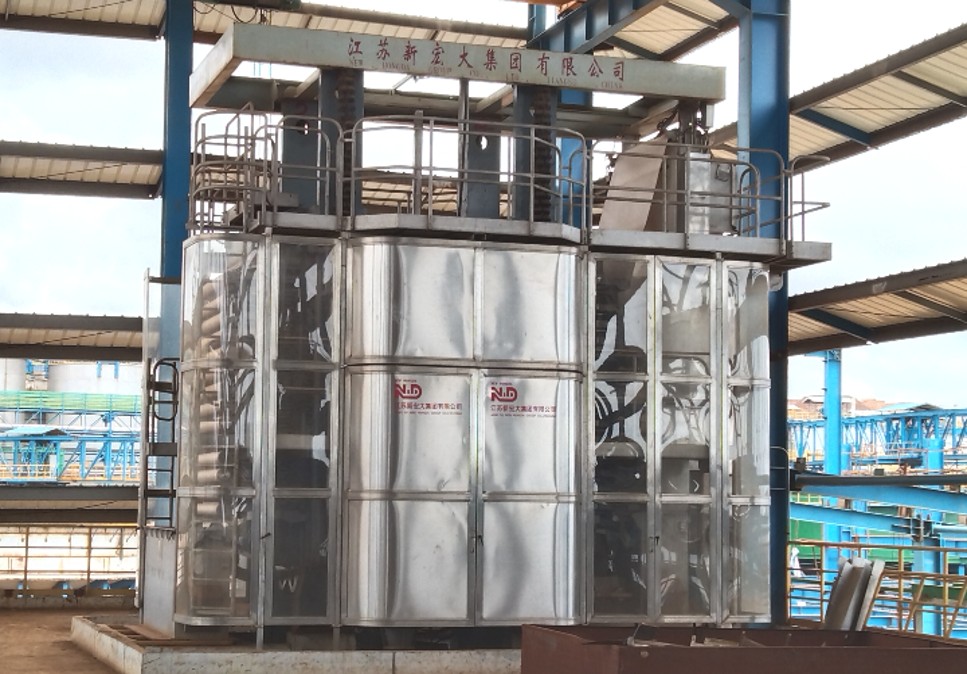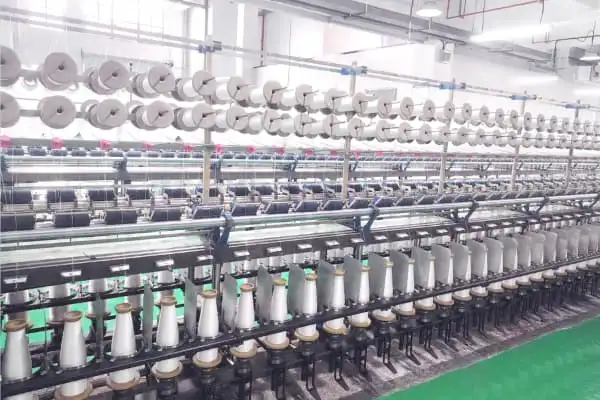In industries like mining, chemical processing, wastewater treatment, and food production, separating solids from liquids is vital. Filter presses play a big role in this process. As technology improves, companies must decide whether to stick with old-school manual filter presses or switch to modern automated ones. This article looks at how efficient, functional, and practical both options are to help businesses decide if automated filter presses really perform better.

Overview of Filter Press Technology
Filter presses are machines that separate solids from liquids in a slurry using pressure. They’ve been around for a long time and are still widely used.
What is a Filter Press and How It Works
A filter press pumps slurry into plates covered with special cloths. Pressure pushes the liquid through the cloth, leaving behind a solid “cake.” The process has several steps: feeding the slurry, squeezing it, sometimes washing it, drying it with air, and removing the cake.
Step 1 – Feed: The slurry moves through pipes into chambers in each filter frame. It passes through the filter cloth. The solid cake starts forming, and the liquid (filtrate) flows out through pipes.
Key Components of Filter Press Systems
Filter presses have these main parts:
- Filter plates and frames
- Hydraulic system
- Slurry feed pump
- Filtration cloths
- Control systems (manual or PLC-based)
Automated systems also include sensors, actuators, and user-friendly control panels for smooth operation.
Manual Filter Presses: Features and Performance
Manual filter presses are simple and have been used for many years because they’re affordable and easy to understand.
Operation Workflow of Manual Filter Presses
Workers control every step by hand. They pump slurry into chambers, tighten plates with levers or hydraulic equipment, watch the filtration time, open plates after filtering, and clean the cloths themselves.
Advantages of Manual Filter Presses
Manual presses cost less to buy and work well for small businesses. Their benefits include:
- Lower upfront cost
- Easy upkeep
- Hands-on control for skilled workers
Limitations and Challenges in Manual Operation
But manual presses have big downsides:
- They need a lot of work from people.
- Mistakes can lead to uneven filtration.
- The process takes longer.
- Workers face more safety risks when handling equipment.
Automated Filter Presses: Features and Innovations
Automated filter presses use smart technology and machines to make the process easier and faster.
Automation Mechanisms in Modern Filter Presses
These systems run on their own with full control. They use PLCs with touchscreens to show what’s happening in real time. Automated plate shifters remove cakes quickly. Air-drying systems lower the cake’s moisture a lot. The maximum pressure can reach 16 kg, and air drying makes the filter cake very dry. For example, phosphogypsum filter cake can have just 10% moisture, compared to 25% in manual systems. This can even skip the traditional drying step.
Benefits of Automating the Filtration Process
Automation brings many perks:
- Steady filtration quality every time.
- Less need for workers.
- Faster cycles with more output.
- Safer because people touch the machine less.
- Less energy use when set up well.
The system runs automatically, needs little effort, and is easy to use. It works in a closed setup, so the cloths last longer, and there’s no leakage or harm to the environment.
Common Applications for Automated Systems
Automated presses are popular in busy industries like:
- Phosphate chemical processing
- Wastewater treatment plants
- Food processing plants
- Pharmaceutical manufacturing
They’re used in fields like chemicals, petroleum, paint, food, and pharmaceuticals.
Efficiency Comparison Between Automated and Manual Options
To see which system is better, we need to compare them on key points like speed, cost, and quality.

Cycle Time and Throughput Differences
Automated systems finish cycles quickly because everything works together smoothly. For example, unloading cakes takes only 30–40 seconds with equipment like the 168㎡ filtration area model. In manual presses, unloading one plate can take minutes.
Labor Requirements and Operational Costs
Manual presses need workers to watch and run them, which takes time and skill. Automated ones need fewer people, cutting costs over time, even though they cost more to buy at first.
Maintenance Needs and Downtime Considerations
Manual presses can stop working longer if workers make mistakes or miss maintenance. Automated systems have equipment that spot problems early. They have a smart control interface with self-checks and alarms, helping plan maintenance and avoid sudden breakdowns.
Filtration Quality and Consistency
Automated presses apply even pressure across all plates, making cakes the same thickness every time. Air quickly dries the cakes through the feed pipe, creating drier cakes that need less extra work compared to manual systems.
Factors to Consider When Choosing Between Manual and Automated Systems
Picking between manual and automated presses depends on what your business needs.
Scale of Operation and Production Volume
Small companies with small batches might find manual presses enough. But if you need to produce a lot or run all the time, automated systems are much better for keeping things fast and efficient.
Budget Constraints and Long-Term ROI
Automated presses cost more to buy, but they save money later. They cut labor costs, use less energy, and can even skip traditional drying steps. This boosts productivity and reduces waste, making them a smart choice over time.
Safety, Compliance, and Operational Risk
Manual presses put workers at risk because they handle the machine a lot. Automated systems are enclosed, so there’s less contact with dangerous materials, and they cause no leaks or pollution.
Environmental Impact and Sustainability Aspects
Being eco-friendly is a big deal when comparing these technologies.
Energy Consumption Comparisons
Automated presses use air drying, which saves energy compared to the heat-based drying used after manual presses. Low moisture in cakes means traditional drying steps can often be skipped, helping meet green goals.
Waste Handling Capabilities
Automated systems have back-flush features that clean cakes without wasting water. Self-cleaning cloths don’t need extra water, unlike manual cleaning, which uses a lot. This makes automated systems better for the environment.
Resource Optimization with Automation
Automation uses precise controls to reduce material loss during transfers. This improves output while leaving a smaller environmental mark.
Industry Trends Toward Automation in Filtration
As industries go digital, filtration technology is keeping up with smarter solutions.
Technological Advancements Driving Automation
New filter presses use AI to adjust settings in real time. Sensors catch problems early, and predictive equipment plan maintenance to avoid unexpected stops.
Adoption Rates Across Industries
Industries like pharmaceuticals and chemicals, where cleanliness is critical, love automated systems for their enclosed designs. Big mining operations also use them for their ability to handle tough conditions and produce a lot.
Future Outlook for Filter Press Technologies
As rules on the environment get stricter and worker costs rise, automated presses will likely become even more popular. New materials, like lightweight polymer filter elements, will make equipment last longer and filter better.
NHD as a Trusted Supplier of Industrial Filtration Solutions
Since 2005, NHD (New Hongda) has been a top provider of filtration solutions for many industries. They’ve sold over 200 units, showing their experience and reliability.
Overview of NHD’s Product Series
NHD offers a wide range of products, including:
- Filter Series: For basic solid-liquid separation needs.
- Automatic Press Filter Series: Includes models like HDLY Vertical Automatic Pressure Filters for compact, high-yield dewatering.
- Agitator & Thickener Series: For concentrating slurry before filtering.
- Equipment for Sulfuric Acid Industry: Special corrosion-resistant equipment.
- Pressure Vessel Series: Safe vessels for high-pressure work.
- Desulfurization Equipment Series: Helps control emissions.
- Filter Cloth Series: Strong fabrics that last a long time.
- Material Series: Special polymers and metals for longer equipment life.

Conclusion
Automated filter presses beat manual ones in most areas, like speed, reliability, and eco-friendliness. Though they cost more at first, their long-term savings make them a great pick for modern businesses aiming for high output with less harm to the planet.
FAQs
Q1: What are the main benefits of switching to an automated filter press?
A: Automated presses are faster, need fewer workers, and ensure steady quality. They have low-moisture cakes, are safer, and clean themselves, saving money over time.
Q2: Is it worth upgrading a manual filter press to an automated system?
A: Yes, especially for big or nonstop operations. Automated systems boost output, meet green standards, and avoid leaks or pollution.
Q3: How do I know if my facility needs a manual or automated filter press?
A: Look at your production size. Small batches might be fine with manual presses due to low cost. But for growth or high output, automated systems with smart feeding and drying are way more efficient in the long run.

